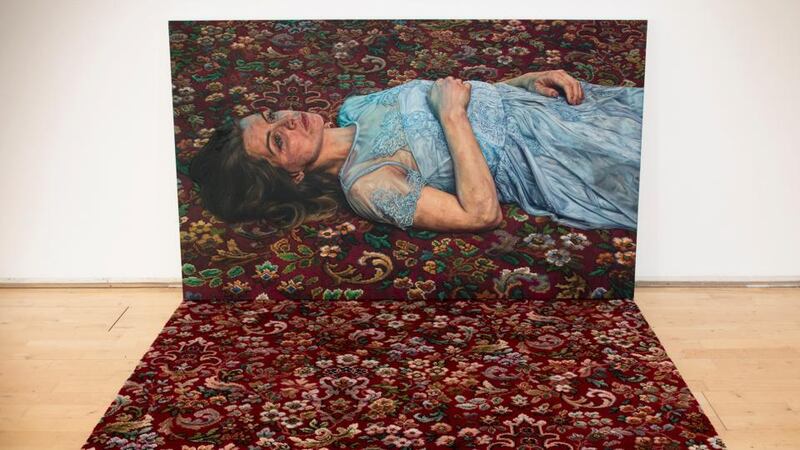Eclectic Images: Recent Acquisitions 2011-2016
National Gallery of Ireland, Dublin
★★★★
Works from the Brian Lalor collection quite rightly dominate the exhibition at the National Gallery of Ireland of selected acquisitions over the past five years.
Lalor’s gift of his print collection to the gallery is a remarkable act of generosity. He is a respected printmaker and a scholar who lectured on the history of printmaking for many years.


His collection was assembled partly on the basis of personal taste, but in a scholarly spirit, with an eye to illuminating the long, diverse history of print. His gift comprises more than 160 single-sheet prints, together with portfolios and illustrated books.
As Anne Hodge, the gallery's curator of prints and drawings, explains, the gift will be primarily a study collection, a resource available to students and researchers. One can certainly see the logic of that, but it should not lead us to disregard its non- academic virtues.
As the current display makes clear, there are many outstanding individual pieces. The Claude Lorrain etching Coast Scene with Europa and the Bull is an absolute beauty. His paintings may be more familiar, but Claude was also a brilliant draughtsman and an innovative printmaker. He made fewer than 50 etchings, and all are original works in themselves; that is, they don't fall into the commercial print category of being relatively affordable reproductions of original paintings.
Inevitably, there are many examples of those in the collection. That was largely what printmaking was about. Engravers were usually producing more affordable, monochrome copies of paintings that could circulate more widely.
Anthony van Dyck is usually credited with inventing the portrait print for his series Iconography, a collection of portrait engravings of his artistic peers and other contemporaries. It was the start of a practice that led on, via the development of photography, printing and digital media, to celebrity culture.
For some, Van Dyck worked on etchings himself, while the bulk were engraved by others, including here Wenceslaus Hollar, from Van Dyck’s drawings. The directness and vitality of his own etchings proved enormously influential. As photomechanical technology supplanted the portrait printmakers and replaced the copy engravers in providing increasingly good reproductions of original paintings, arguably leaving room for the rise of the artist-printmaker.
In some respects the Lalor collection directly reflects his experiences. The germ of the collection is one of George Baxter's lavishly coloured, detailed reportage prints, Review of the British Fleet, Portsmouth (1854). Lalor relates that, as an avid teenage collector of coins, fossils, rocks and minerals, he read about the innovative Baxter prints. "Shortly afterwards, I found one in a junk shop in Cork." He bought it and never looked back.
He also kept learning. "Neither extreme rarity nor superlative condition preoccupied me so much as inherent interest," he says. His own preoccupations shaped the collection over decades. Groups of prints emerged: "The portrait, urban landscape, literature, followers of James Abbott McNeill Whistler, orientalism . . . " One apparently idiosyncratic grouping concerns biblical Palestine. In fact, Lalor became director of the architectural department of the Hebrew University of Jerusalem's excavations at the Temple Mount.
His archaeological work also took him to the Smithsonian Institution and elsewhere. It seems fair to say that his own drawing and printmaking has a concentrated, purist quality. He is also well-regarded as an author. His history of the Graphic Studio Dublin, Ink-Stained Hands, is not only a significant contribution to art history, it's also a beautiful book (much credit to Anú Design, Tara). You are unlikely to see so much of his print collection on view again, so make a point of visiting.
[ nationalgallery.ieOpens in new window ]
Once Removed – Ian Cumberland
Millennium Court Arts Centre, Portadown, Co Armagh
★★★★★
Ian Cumberland was born in Banbridge in 1983 and studied art at the University of Ulster. He showed great natural facility as a painter and draughtsman.
His graduation show attracted much favourable attention and won him an award, the first of several, including the Davy Portrait Award in 2010.
He became identified with meticulously painted, larger-than-life portraits that are startling in their hyper-reality. The intriguing thing about this is that he never really thought of himself as a portrait painter and harboured a distrust of his own technical facility. He was a bit uncomfortable about the direction his work was taking.
Then he won an Artists Career Enhancement Scheme award from the Arts Council of Northern Ireland, which partnered him with Millennium Court and its director, Jackie Barker. The result is Once Removed, a virtuoso show that harnesses all his skills and takes him in a new direction. He paints single figures in domestic interiors. Each appears caught at a moment of doubt or hesitation, and the images have something of the enhanced realism of theatre or cinema. There is a recurrent play on mirrors and glazed surfaces, which seem to both fascinate and annul the individuals.
Cumberland says he was influenced by Guy Debord’s 1967 work on consumer culture. Debord diagnosed a society in which appearances ruled. Cumberland projects the idea on to the digital age of virtual reality and social media, a world of screens, once removed from the real. Several pieces extend the settings of the paintings out into the gallery, and an elaborate, two-part installation visualises a world of continual surveillance – and zero perception. It’s unsettling and compelling. Until












